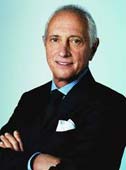When Myths are Rewritten
A REVIEW OF: GENUIS ON THE EDGE: THE BIZARRE DOUBLE LIFE OF DR WILLIAM STEWART HALSTED
Most of us recall the ardour
of our residency training,
and the long hours we
logged over many consecutive
years to learn our trade.
Back then, I fully believed
that the importance of
such an apprenticeship was
written on stone tablets,
and handed down to us
from enlightened mentors,
all of whom shared
a certain genealogy with
the "grandfather" of modern day surgery, Dr William
Stewart Halsted. I was led to believe that the manner in
which we trained as residents was the result of careful
study and analysis over many years by Dr. Halsted. The
Halstedian model of residency training was sacrosanct.
 Gerald Imber
|
In the book Genius on the Edge: The Bizarre Double
Life of Dr William Steward Halsted by Dr. Gerald Imber,
the mythology surrounding Halsted is dismantled and
rewritten. Through his primary research into one of
America’s most enigmatic
early surgeons, Dr Imber
casts new light on the personality
and habits of this fascinating
man. Halsted worked
at Johns Hopkins medical
school in Maryland, and was
one of the luminous "Big
Four Doctors", famous for
their contributions to their
respective fields of study, who
included Drs William Osler,
William H Welch, first dean
of Johns Hopkins Medical School, and Howard Atwood
Kelly, the highly skilled Professor of gynecology.
It was Halsted who recognized the importance a system
to transform a journeyman surgeon into a scholar.
The process established by Halsted required an exacting
knowledge of surgical pathology, teaching one’s juniors,
incremental acquisition of surgical responsibility, and
independent laboratory studies. In the end, Halsted
trained 17 residents, all of whom became surgeon educators
and highly competent surgeons. Halsted himself
wrote highly insightful works on hernia repair and
radical mastectomy for breast cancer, which became the
gospel for generations of surgeons.
|
However, there was a dark side to Halsted’s personality
and behavior which Imber brings to light in Genius
on the Edge. Halsted was hopelessly addicted to morphine
and cocaine, an addiction which dated back to
1884 when he began to experiment with topical and
injectable cocaine to induce local anesthesia. His career
became marked by significant absenteeism as he left his
practice for weeks and months at a time. He lost interest
in instructing medical students. He began doing
fewer surgical procedures, and often handed them off to
his assistants while part way through. Sadly, his addiction
haunted him throughout his entire career. He was
unable to break the habit, and Johns Hopkins medical
school had great difficulty keeping the knowledge of his
addiction quiet.
In the words of Imber: "Halsted was a complex and
isolated man, forbidding and nurturing; rigid, proper,
and secretive; compulsive and negligent; stimulating
and reclusive; addicted and abstemious; oblivious and
solicitous; and always concerned about the science of
surgery". It is interesting to speculate how much of modern
day surgical training stems from the mind of a man
who, while under the influence of addiction, considered
himself invincible and indefatigable. Were Halsted not
addicted to narcotics, one wonders what his recommendations
would have been regarding residency training in
surgery. In my view, Genius on the Edge is mandatory
reading for all surgical residents.
We are indeed fortunate that Dr Gerald Imber has
agreed to deliver the Frank Kergin Lecture on February
1st, 2013, at Women’s College hospital from 7:30 - 8:30
am. He has already agreed to tell us more about the enigmatic
Halsted, and the factors that influenced his early
decisions to create surgical residency training programs
the way he did. I look forward to seeing all of you there
for that lecture.
James T Rutka,
RS McLaughlin Chair, Dept Surgery
|